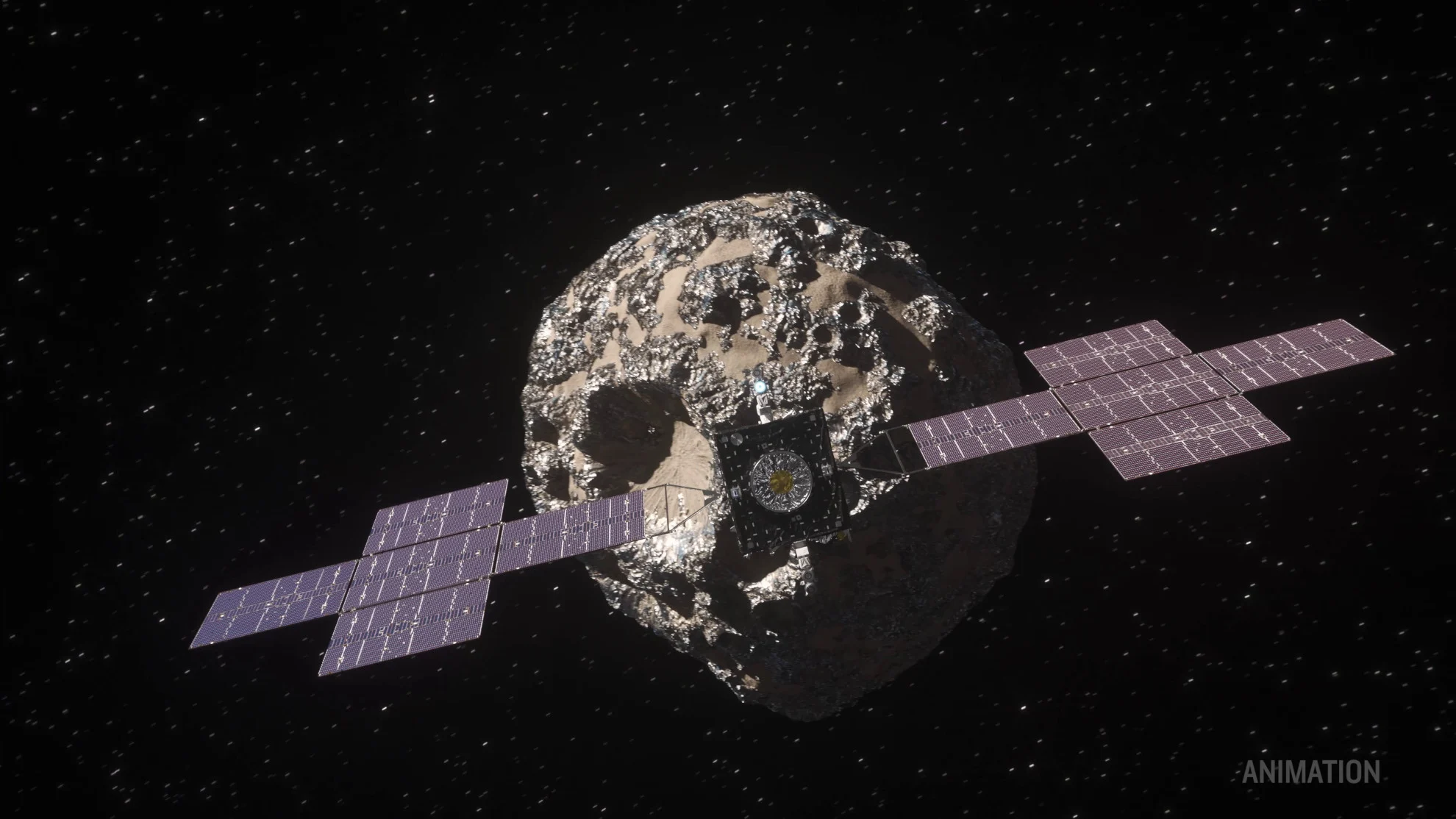
After weather delay, NASA Psyche launches to explore a $10 trillion asteroid
NASA's newest space mission has lifted off on a six-year journey to rendezvous with a unique solar system object.
After a delay due to active weather near Kennedy Space Center on Thursday, NASA's Psyche mission has started its 3.6 billion kilometre trek across space to explore a massive metal-rich asteroid.
On the morning of Friday, October 13, NASA's Psyche spacecraft lifted off atop a SpaceX Falcon Heavy rocket, blasting off on a six-year journey to asteroid 16 Psyche — one of the most unique objects in our solar system.

A SpaceX Falcon Heavy rocket with the Psyche spacecraft onboard lifts off from Launch Complex 39A at NASA's Kennedy Space Center on Friday, Oct. 13, 2023. Credit: NASA/Aubrey Gemignani
The launch of the Psyche mission was originally scheduled for precisely 10:16 a.m. EDT on Thursday, October 12. However, late in the day on Oct. 11, NASA decided to delay the attempt due to unsettled weather conditions that would likely impact the launch attempt Thursday morning.
Despite cloudy skies at the launch site Friday morning, Psyche blasted off during its instantaneous launch window at 10:19 a.m. EDT.
Watch again: NASA live-streamed the Psyche launch with detailed commentary from the launch site and the mission team at the Jet Propulsion Laboratory
DON'T MISS: Look up! Canada will be treated to a partial solar eclipse on Saturday
Psyche's target: 16 Psyche
The ultimate target of NASA's Psyche probe is the asteroid named 16 Psyche. First found in March 1852 and only the 16th minor planet ever discovered, this massive, 220-kilometre-wide object orbits the Sun in the asteroid belt between Mars and Jupiter.
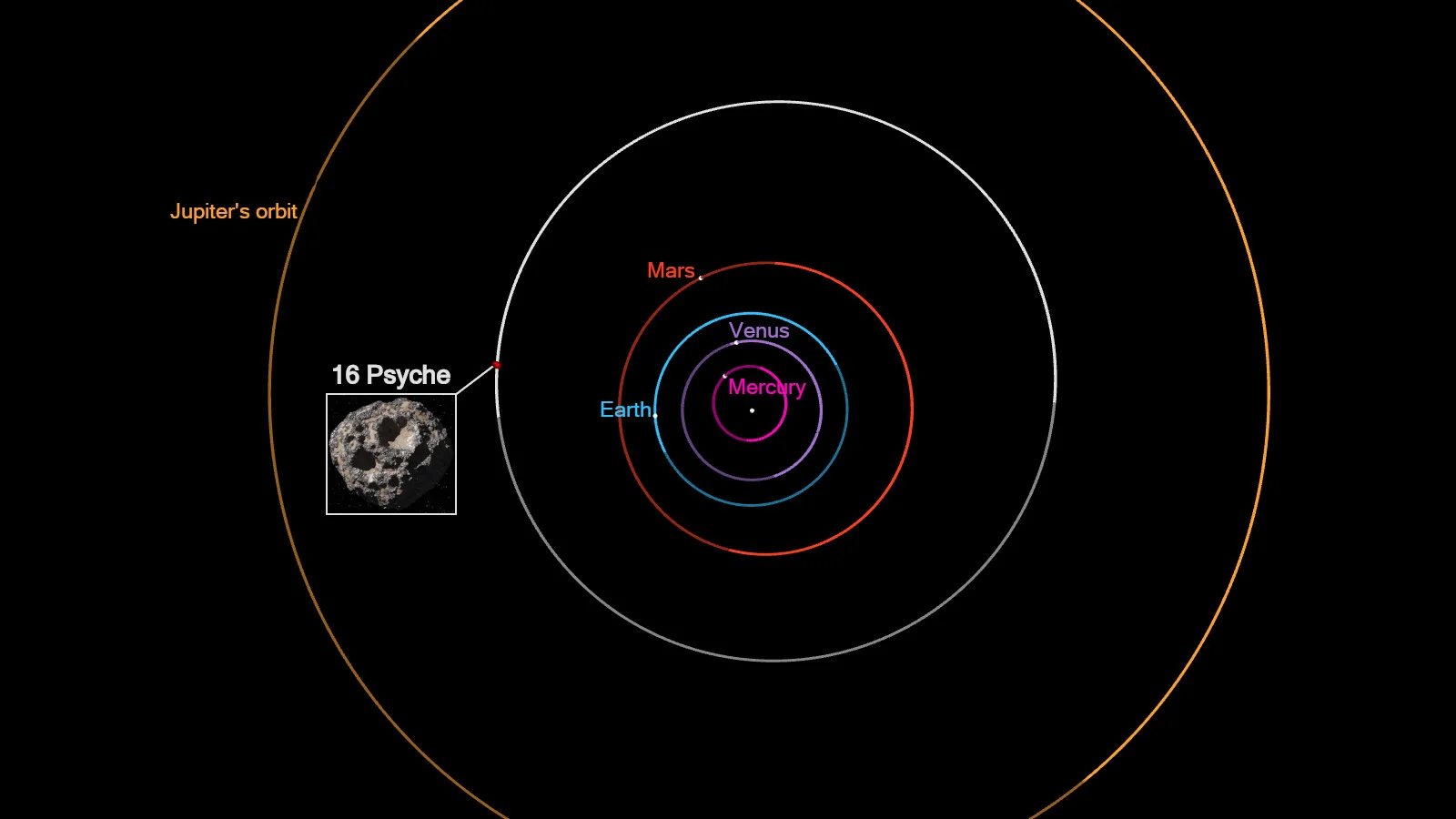
This simulation shows the position of asteroid 16 Psyche on August 25, 2029, when NASA's Psyche spacecraft is expected to rendezvous with it. Credit: NASA/JPL-Caltech/Scott Sutherland
The reason for going to this particular asteroid, compared to the millions of others, is that 16 Psyche appears to be unique. Most asteroids are composed mainly of rock. However, observations and measurements from Earth-based telescopes have shown that 16 Psyche is rich in metals.
From that discovery, planetary scientists believe it could be the leftover interior of an object known as a planetesimal. At the beginning of our solar system, as the protoplanetary disk surrounding the Sun began to coalesce into what would eventually become the planets, smaller objects (bigger than the asteroids we know today but smaller than the planets) formed first.
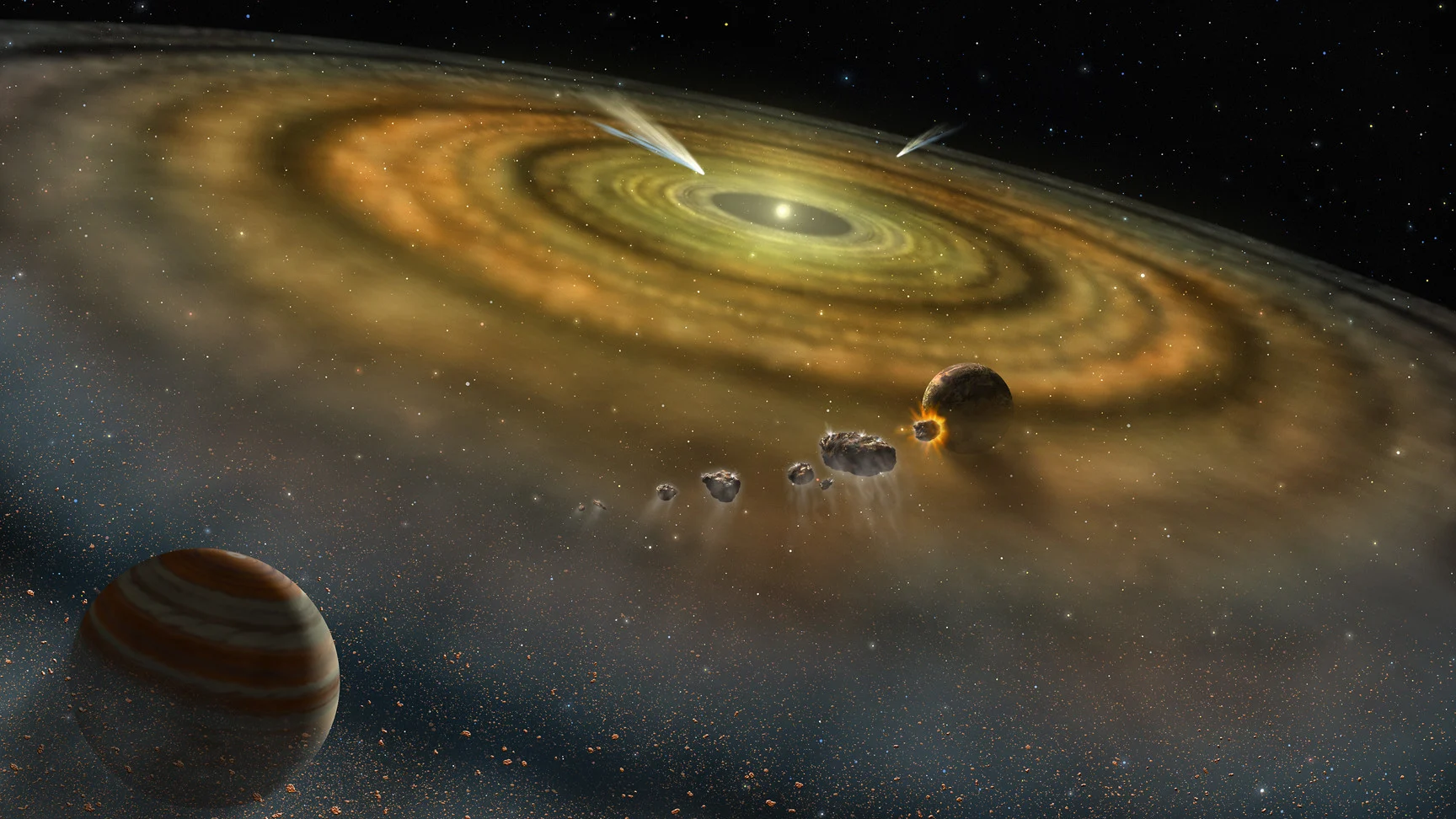
An artist's impression of the protoplanetary disk surrounding a young star shows dust particles growing into planetesimals and then Earth-like planets. Farther from the star, gas accretes on planetary cores to create Jupiter-like giants. Credit: NASA/FUSE/Lynette Cook
These 'planetesimals' would have had a similar composition to the planets, with heavier metals at their core and lighter rocks forming an outer crust.
Most of these objects went on to collide with each other and become part of the planets and moons in the solar system. However, 16 Psyche may be a leftover planetesimal that lost its outer crust of rock due to collisions.

This artist's impression shows what asteroid 16 Psyche may look like, based upon radar data and telescopic observations over the years. Credit: NASA
"Humans can't bore a path to Earth's metal core, so visiting Psyche could provide a one-of-a-kind window into the history of violent collisions and accumulation of matter that created planets like our own," says NASA.
"If the asteroid proves to be leftover core material from a planetary building block, scientists will learn how its history resembles and diverges from that of the rocky planets," NASA explained. "And if scientists discover that Psyche is not an exposed core, it may prove to be a never-before-seen kind of primordial solar system object."
MORE FROM SPACE: Europa's subsurface ocean may be more habitable than we thought
Psyche's journey
With 16 Psyche located in the outer reaches of our solar system's asteroid belt, it will take some time to get there.
Once in space, the Psyche spacecraft will be placed on a trajectory towards Mars. When it arrives at the Red Planet in 2026, it won't be staying, though. The probe will perform a slingshot maneuver, swinging past the planet and borrowing some of Mars' orbital speed to propel itself into the asteroid belt even faster.
From there, the spacecraft will take an additional three years to complete its journey, with a scheduled arrival at 16 Psyche planned for August 2029.
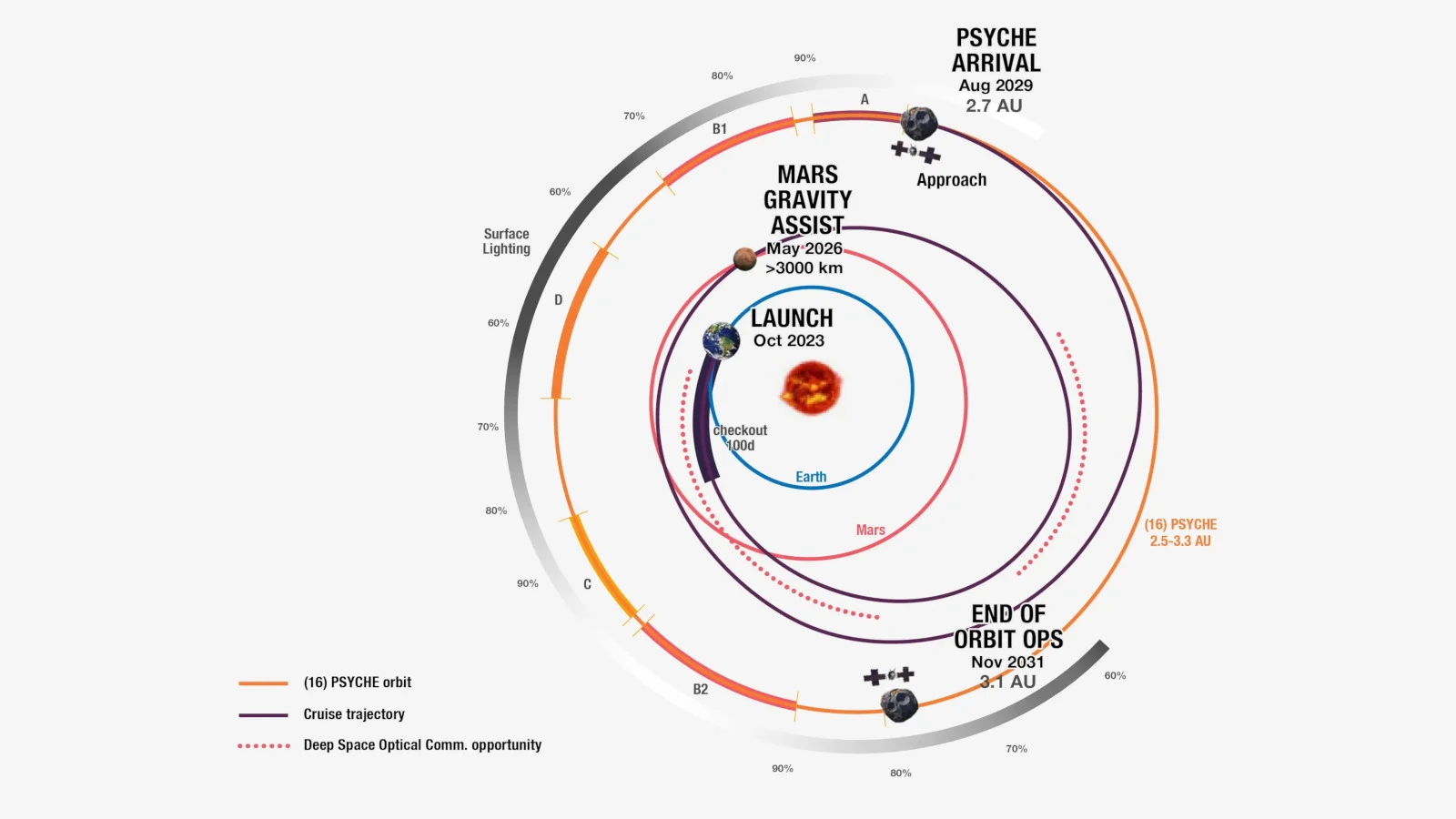
The path of the Psyche mission from October 2023 through August 2029 is shown in this diagram, along with significant mission milestones that extend all the way until November 2031. Credit: NASA/JPL-Caltech
At the end of that 3.6 billion kilometre journey, Psyche will enter into a far orbit around the asteroid, revealing a close-up look at this strange world for the first time.
The plan from there is to spend over two years orbiting 16 Psyche at different distances, fully imaging its surface and examining its composition and density.
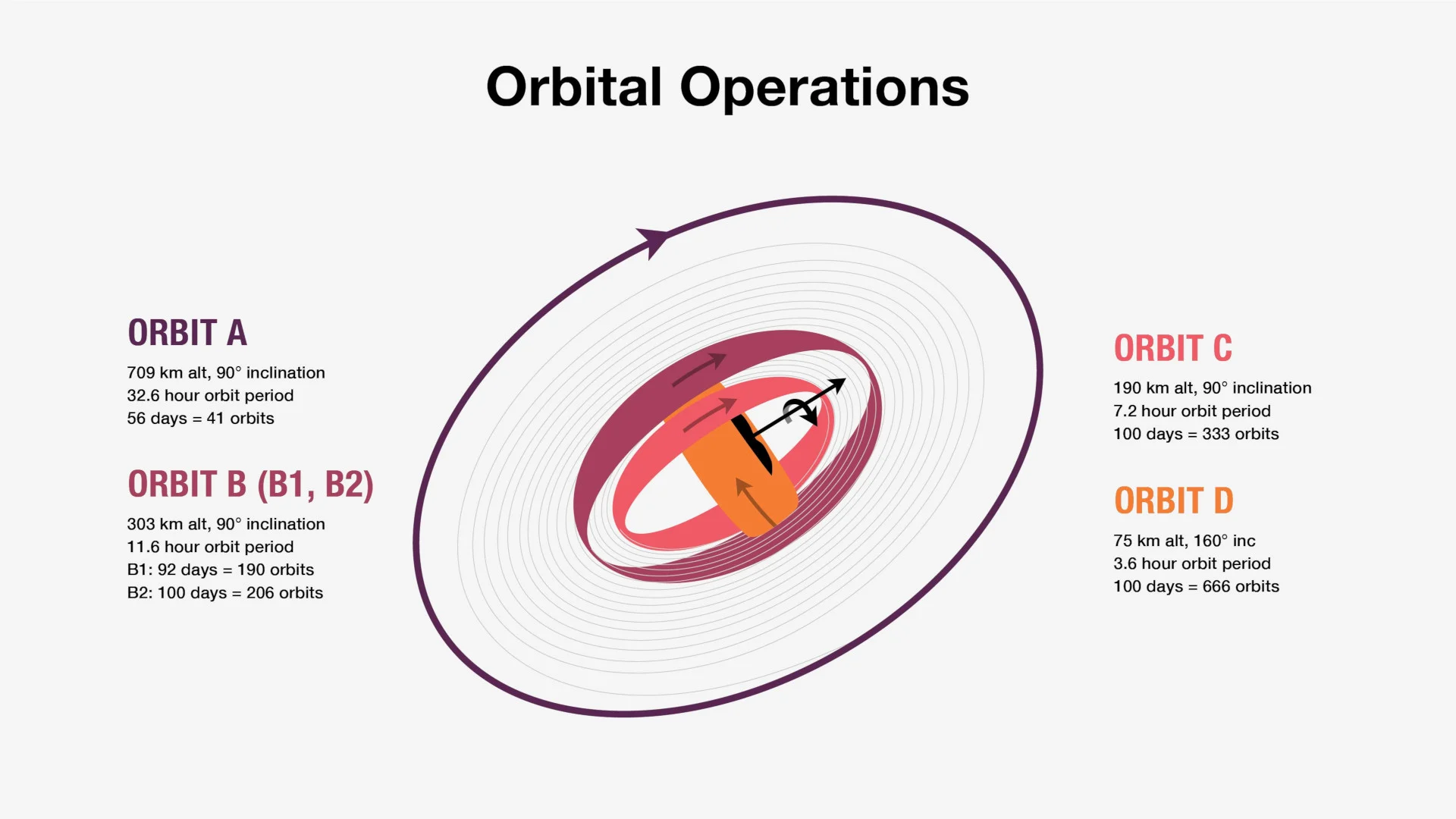
The planned orbits of Psyche are shown here, getting progressively closer to the asteroid with each step. Credit: NASA/JPL-Caltech
What is the overall purpose of this mission? It could help answer some of the fundamental questions scientists have about how our solar system formed and how the Earth itself formed.
Bonus mission!!
Although the primary mission for Psyche is to reach its asteroid target and explore that bizarre object, but there is a new technology demonstration tagging along on the first leg of its journey.
NASA's Deep Space Optical Communications (DSOC) is a new laser communication system attached to the Psyche spacecraft.
According to NASA, the radio communications that spacecraft have been using for decades are certainly tried-and-tested as a reliable way to keep in touch with deep space missions. However, with new spacecraft able to collect an increasing amount of data, including high-resolution images and video, there is a need to increase the amount of data they can transmit and also the amount we can receive at once back here on Earth.
DSOC is NASA's first test of how laser communications can fulfill the increase in bandwidth required for these new deep space missions.
Watch below: Testing Space Lasers for Deep Space Optical Communications
When a current space mission sends data back to Earth, the radio waves spread out from the transmitter over a wide angle. Thus, the transmitter only needs to be aimed in the general direction of the receiver in order for NASA to get that data.
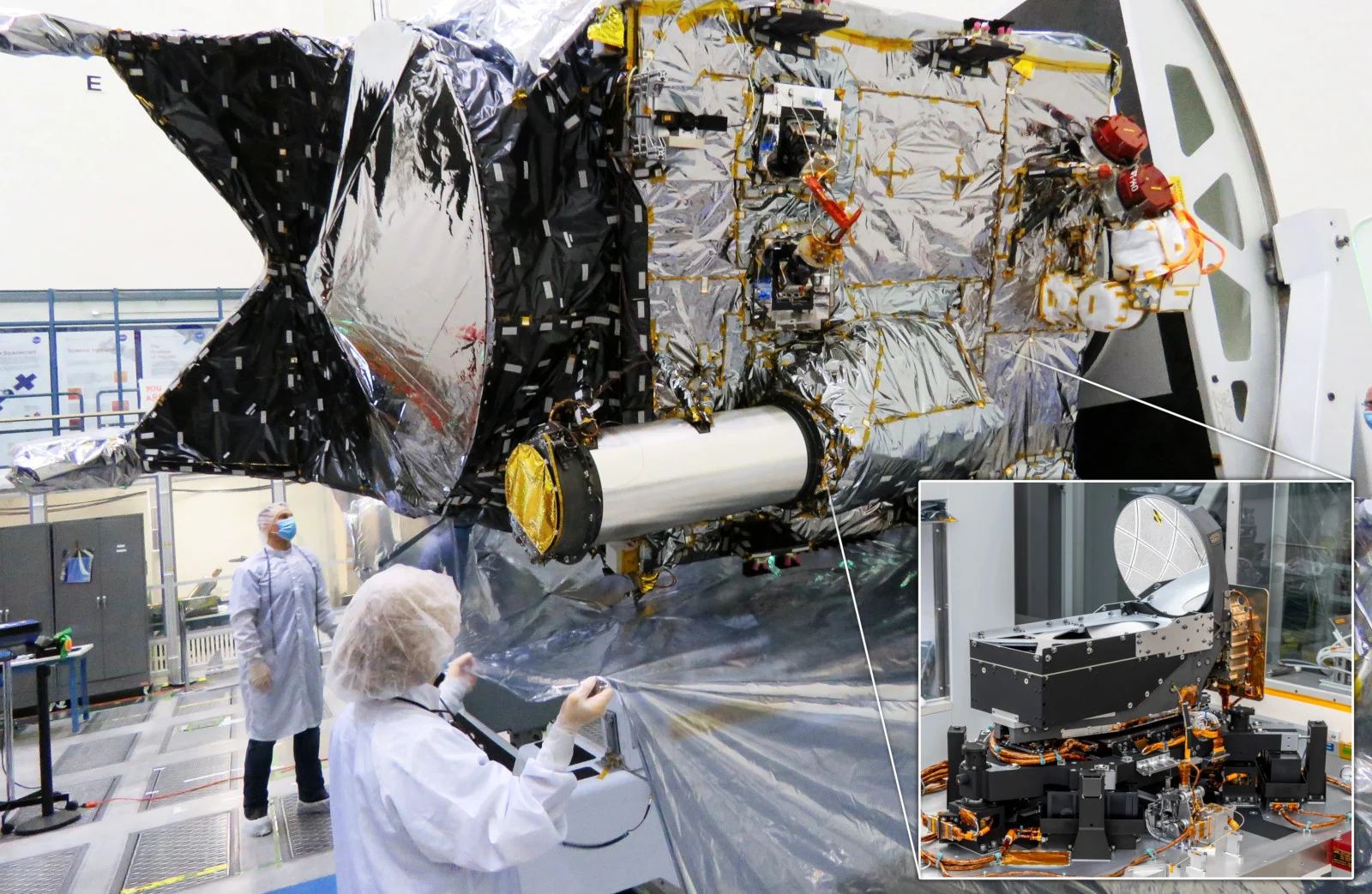
DSOC (inset) is positioned on the side of the Psyche spacecraft, where it can be aimed back at Earth to test laser communications. Credit: NASA
DSOC will use a highly-focused laser to transmit data back and forth between Psyche and Earth, from as far away as Mars.
According to NASA, "The flight laser transceiver and ground-based laser transmitter will need to point with great precision. Reaching their targets will be akin to hitting a dime from a mile away while the dime is moving. So the transceiver needs to be isolated from the spacecraft vibrations, which would otherwise nudge the laser beam off target. Initially, Psyche will aim the flight transceiver in the direction of Earth while autonomous systems on the flight transceiver assisted by the Table Mountain uplink beacon laser will control the pointing of the downlink laser signal to Palomar Observatory."
Weather or not
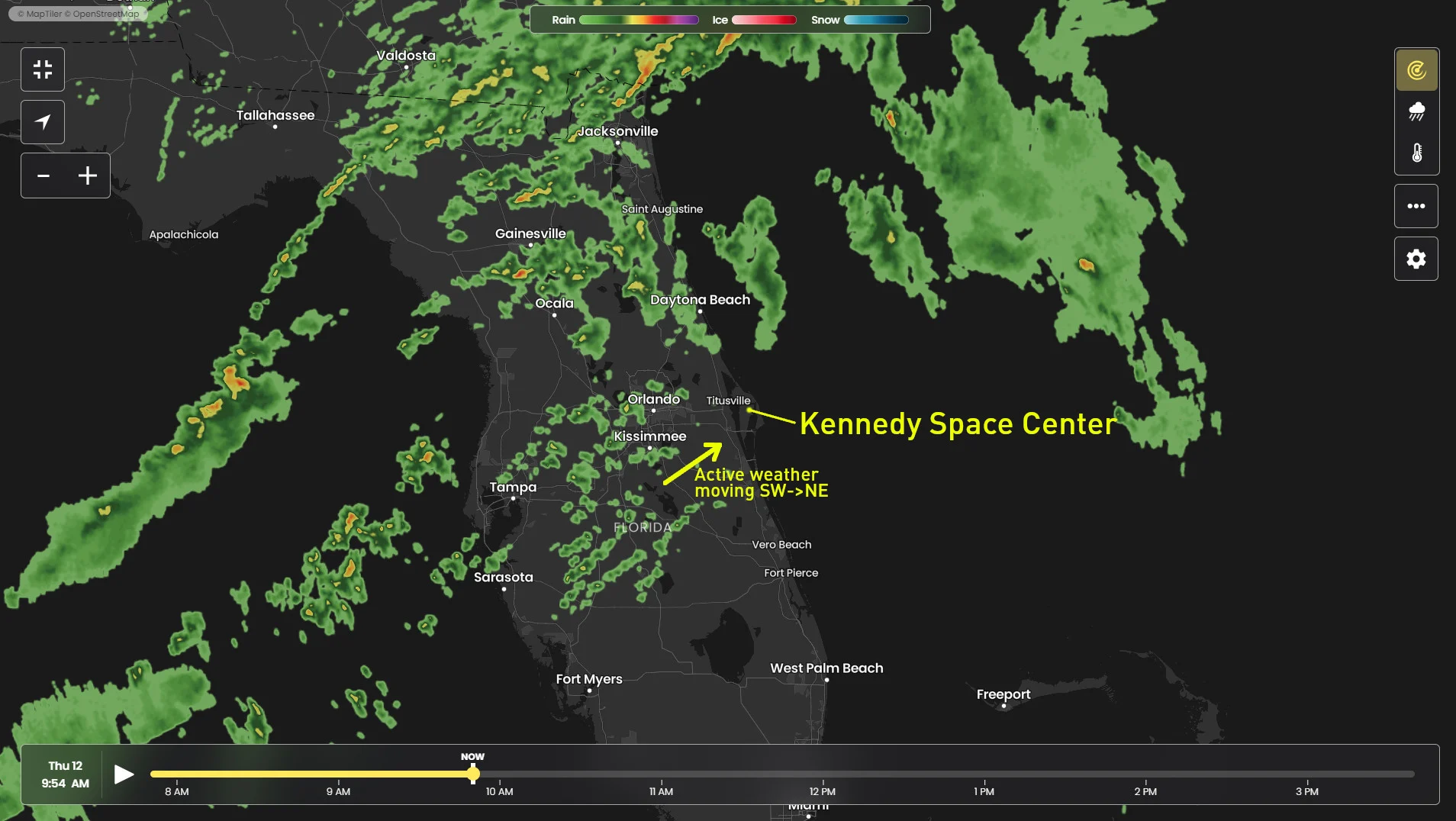
As shown on The Weather Network's radar map, above, bands of rain and scattered showers were passing over central and northern Florida Thursday morning. Annotations indicate the location of Kennedy Space Center and the direction of flow of the active weather at that time.
On Wednesday, the U.S. Space Force's 45th Weather Squadron had forecast an 80 per cent chance that conditions on the morning of Oct. 12 would violate the weather constraints NASA imposes on rocket launches. That left only a 20 per cent chance that the launch would go ahead.
In their Thursday update, they forecast a 60 per cent chance of violating weather constraints for a Friday morning launch attempt. If there is another delay, conditions appear much more favourable on Saturday, and even better on Sunday.
According to NASA, they have daily launch opportunities for the Psyche mission until October 25.
Weather constraints?
Cloudy and rainy conditions make launch day challenging for both the crews and the crowds that gather to watch. However, the primary concern forecasters with the 45th Weather Squadron look out for involve the potential for lightning.
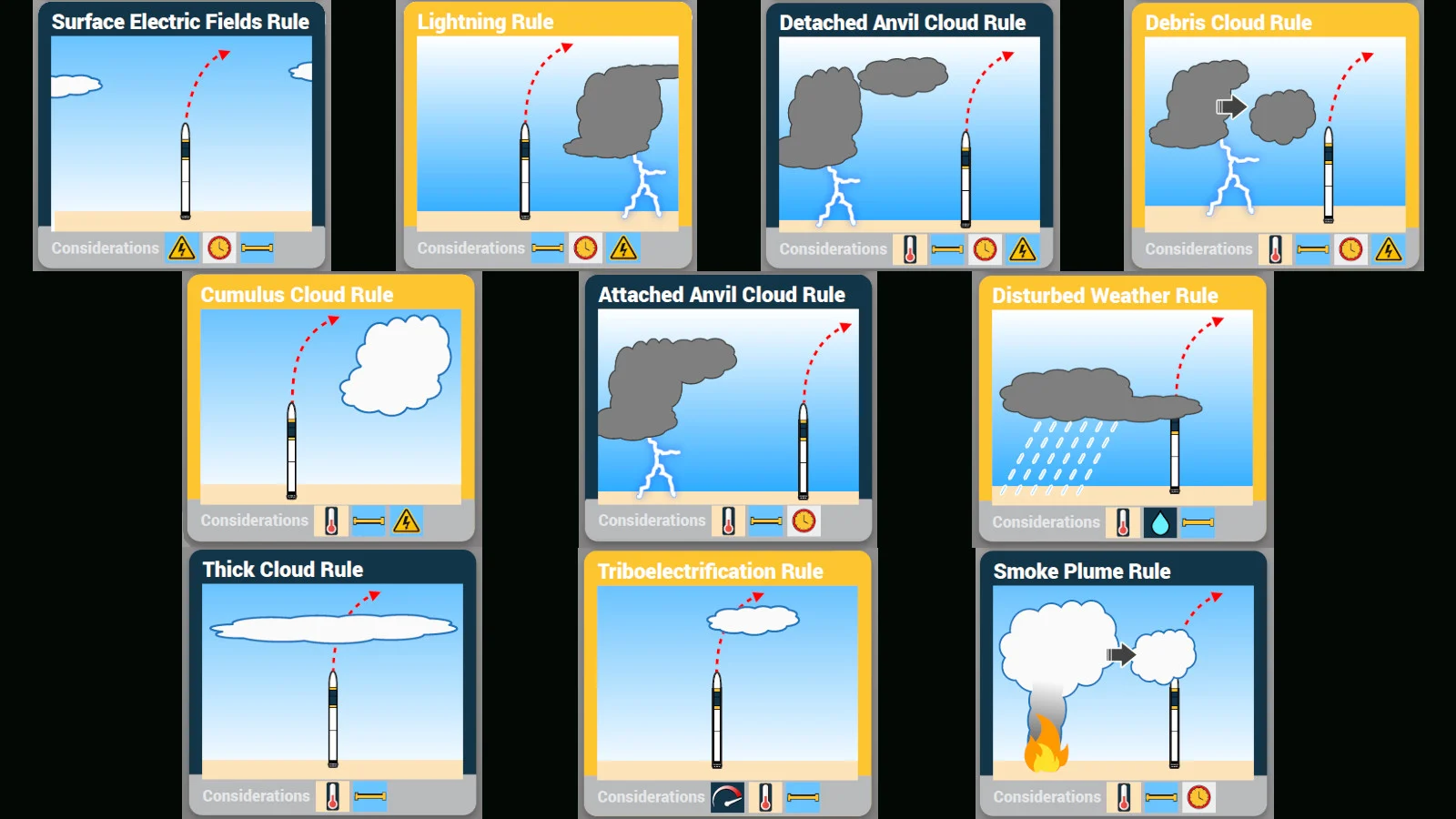
The 45th Weather Squadron's Lightning Launch Commit Criteria (LLCC) each describe weather conditions in the vicinity of the launch platform with the potential to produce a lightning strike or for the launch itself to trigger a lightning strike. Credit: U.S. Space Force 45th Weather Squadron
The conditions forecasters are on the lookout for include cumulus clouds or lightning-producing storm clouds over or down-range of the launch site, thick stratus clouds directly above the rocket, anvil clouds (cumulonimbus) or rainy weather to the west of the launch pad, and the presence of strong electric fields in the vicinity of the launch site.
READ MORE: Lightning strikes almost doomed the 1969 Apollo 12 Moon mission
Any of these conditions could either produce natural lightning, or cause rocket-triggered lightning, which could be potentially disastrous for the mission and crew.
(Thumbnail image courtesy NASA)











